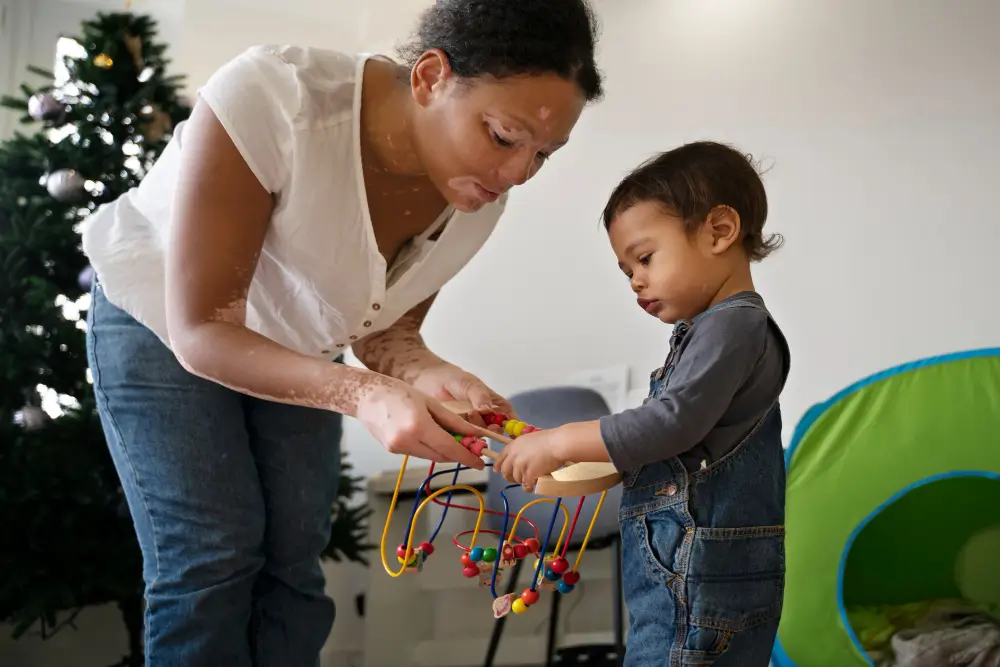What if one approach could unlock potential, ease daily challenges, and help autistic children grow in their own unique ways? Occupational therapy might be a key part of that process—but how does it actually work, and what makes it so effective? In How Occupational Therapy Empowers Autistic Children, we explore the many ways this therapy supports development, often in quiet but powerful ways.
Specialized care that makes a difference—Start OT for your autistic child today! 🏥✨

H2: Occupational Therapy for Autism
Occupational therapy supports children with autism by helping them build the skills they need to participate more independently and meaningfully in daily life. The approach begins with an individualized assessment that identifies challenges in daily functioning, followed by a personalized intervention plan.
The main goal of occupational therapy for autistic children is to promote independence. This includes supporting the development of skills for daily routines, like using the bathroom or feeding themselves, as well as encouraging participation in social and academic life.
Through this support, many children are able to form stronger relationships with peers and adults, express emotions more appropriately, improve focus and self-regulation, and grow with confidence on a stable foundation that helps them safely explore the world around them.
H2:Key Benefits: Enhancing Skills and Independence
This approach is tailored to each child’s needs, abilities, and interests. The goal is to support active participation in meaningful activities at home, in school, and in social settings. This process involves close collaboration with families, teachers, and other professionals to define specific, personal goals.
One of the most significant benefits is the development of self-care skills. Children learn to handle tasks like hygiene, dressing, and eating by themselves. These achievements help build their confidence and sense of ability.
The therapy also helps children take part in everyday activities more successfully by offering strategies and tools to support them during tasks like bathing, eating, or joining school routines.
It also focuses on managing anxiety and distress by identifying triggers and teaching self-regulation strategies to help children respond more calmly to daily challenges. Social skills are strengthened through structured activities that teach children how to interact, share, and communicate with others.
Personalized early intervention allows children with autism to progress toward greater independence, with respect for their pace, strengths, and individuality.
H2:Common Techniques Used in Therapy Sessions
Each technique is chosen based on the child’s specific needs, strengths, interests, and sensory or behavioral challenges. These interventions aim to support active participation in daily routines and help children gain more independence.
Frequently used techniques in occupational therapy sessions include:
| Sensory Integration | Helps children process and regulate responses to sensory input like noise, textures, or lights. |
| Daily Living Skills Training | Teaches basic tasks like dressing, eating, and hygiene routines. |
| Snoezelen Environments | Uses multisensory rooms to encourage relaxation and reduce anxiety. |
| Task and Environment Modification | Adjusts tasks or spaces to support participation and independence. |
| Visual Supports | Uses visual aids like schedules, pictograms, and task cards for structure and clarity. |
| Applied Behavior Analysis (ABA) | Often combined with occupational therapy to address behavioral and learning challenges. |
| Play Therapy | Uses play as a tool to develop cognitive and social skills. |
| Animal-Assisted Therapy | Encourages communication and emotional growth through interaction with animals. |
| Music Therapy | Promotes coordination, rhythm, expression, and social engagement through music. |
| Massage Therapy | Aims to relieve stress, improve circulation, and increase relaxation. |
These techniques are often combined to suit the child’s unique profile. Approaches like animal-assisted therapy or sensory rooms create safe spaces where children can feel calm, motivated, and open to learning.
Occupational therapy supports each child’s progress by working with their pace and motivation, helping them build a more independent and confident life.
Each session reflects a commitment to personalized, child-focused care, where every activity becomes an opportunity to grow in a supportive and encouraging environment.
H2:The Role of Parents and Caregivers in Supporting Therapy
A child’s autism diagnosis has a deep impact on family life. Parents and caregivers take on a central role, which can bring emotional, physical, and social stress. New responsibilities may affect family dynamics, personal well-being, and relationships.
In occupational therapy, parents and caregivers are seen as co-therapists. They are actively involved in applying strategies in everyday life. With insight into their child’s needs and behaviors, they can reinforce new skills, adapt the home environment, and provide emotional support. This collaboration helps extend the therapy’s impact beyond the clinic or school.
When parents and caregivers gain knowledge and apply it in daily routines, they become powerful advocates and facilitators. Their involvement helps children build both functional and social skills. Occupational therapy becomes a shared effort that supports inclusion and creates a better quality of life, where every step forward is supported with patience and care.
H2: Sources:
- Akhunova, S., & Okhunova, G. (2023). EMPOWERING CHILDREN WITH AUTISM: STRATEGIES FOR SUPPORT AND SUCCESS. Western European Journal of Linguistics and Education, 1(4), 85-92.
- Sterman, J., Gustafson, E., Eisenmenger, L., Hamm, L., & Edwards, J. (2023). Autistic adult perspectives on occupational therapy for autistic children and youth. OTJR: Occupational Therapy Journal of Research, 43(2), 237-244.
